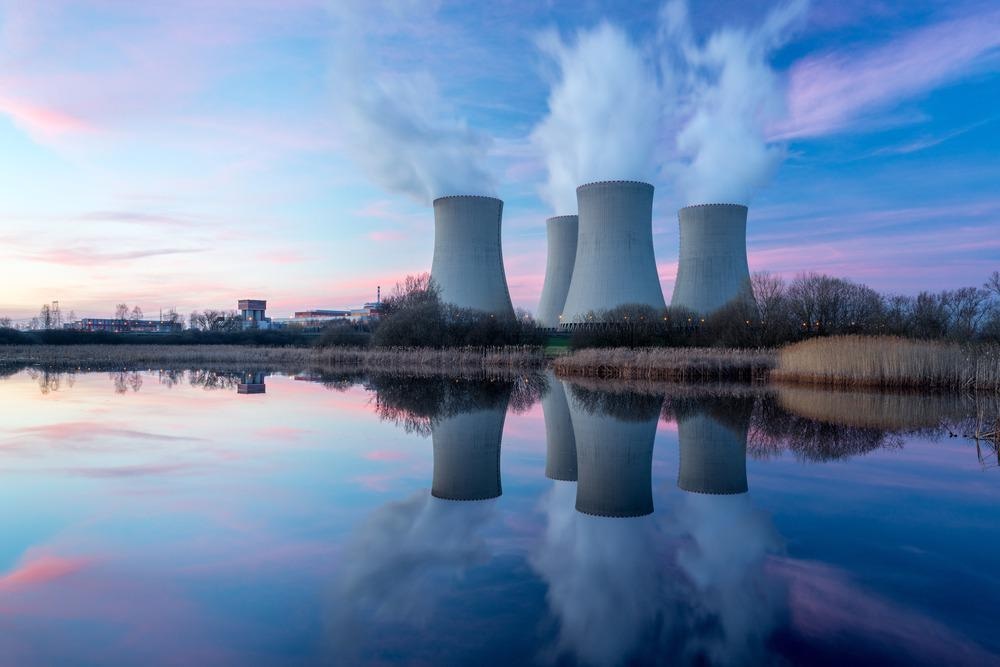The Palo Verde Generating Station in Phoenix, Arizona has been granted the opportunity to demonstrate its ability to produce clean hydrogen energy after receiving $20 million in funding from the US Department of Energy (DOE).

Image Credit: vlastas/Shutterstock.com
The project, spearheaded by PNW Hydrogen LLC, will see the construction of pioneering facilities on the Arizona site that will drive a new, innovative approach for the production of clean hydrogen. This represents an economic turning point for nuclear plants as they adapt to modes of production beyond electricity.
Operated by Arizona Public Service and located near Phoenix, Palo Verde is a three-unit pressurized water reactor plant which is the largest producer of carbon-free energy in the US. Additionally, the plant generates an annual economic impact of more than $2 billion to the Arizona economy.
H2@Scale
Acting as a source for zero-carbon electricity, the project will continue to develop the DOE’s H2@Scale initiative that aims to bring together stakeholders to lead the way in advancing hydrogen production.
As it stands, the US produces around 10 million metric tons of hydrogen each year. The majority of hydrogen production is conducted via centralized reforming of natural gas, however, ‘clean’ alternatives for hydrogen production – including electrolysis – are on the rise.
While hydrogen is primarily used in oil refineries and the ammonia industries other emerging applications include energy storage, transportation, heat generation, and liquid fuels (biofuels).
Developing and deploying clean hydrogen can be a crucial part of the path to achieving a net-zero carbon future and combatting climate change
David M. Turk, Deputy Secretary of Energy
It is believed that the project led by PNW Hydrogen LLC will help meet the DOE’s Hydrogen Shot as part of the department’s advance of its H2@Scale vision. The DOE is committed to achieving its objective of reducing the cost of clean hydrogen by 80% to $1 per kilogram in the next decade: 1 Dollar -1 Kilogram -1 Decade.
Using nuclear powerplants to produce clean hydrogen could contribute significantly to the DOE’s Energy Earthshot initiatives, as these projects are central when it comes to demonstrating the ability to combine nuclear energy with clean hydrogen production.
Nuclear Powered Hydrogen
In order to fund the Arizona-based project, PNW Hydrogen LLC will receive two rounds of funding: $12 Million from the DOE’s Hydrogen and Fuel Cell Technologies Office (HFTO) and $8 million from the department’s Nuclear Energy (NE) office – taking the total to the $20 million as pledged.
Traditional hydrogen production methods involve stripping natural gas molecules of hydrogen which consequently emits carbon monoxide in the process. However, the Palo Verde Nuclear Generating Station will generate hydrogen using nuclear power to split water molecules with a limited environmental impact.
“Using nuclear power to create hydrogen energy is an illustration of DOE’s commitment to funding a full range of innovative pathways to create affordable, clean hydrogen, to meet DOE’s Hydrogen Shot goal, and to advance our transition to a carbon-free future,” says Turk.
Success Through Collaboration
In order to ensure the project reaches its goals and is successful, as the primary recipient of the DOE award PNW Hydrogen LLC will collaborate with a number of additional stakeholders in academia, industry, research, and state-level government.
Arizona continues to lead the nation in clean hydrogen energy innovation, and today’s Department of Energy investment will help fuel continued progress
Kyrtsen Sinema, U.S. Senator (AZ)
With PNW Hydrogen LLC also committed to ensuring there will be storage tanks big enough for six tons of hydrogen onsite, there is the possibility that around 200 MWh of energy can be converted back into electricity and fed into the grid during times when demand is high.
Furthermore, the hydrogen stores can be used for other projects including the production of chemicals and other fuels. If the Hydrogen Shot’s 80% cost reduction is accomplished, new markets for hydrogen could be unlocked which would create more clean energy jobs while reducing greenhouse emissions.
Future Impact
If the Hydrogen Shot goals are met, it is anticipated that there could be a 5x surge in the use of clean hydrogen as an alternative energy source. The DOE’s initiatives could also set off a chain of events which would see accelerated progress and additional breakthroughs for clean hydrogen technologies.
Using nuclear power stations for the production and storage of clean hydrogen tests other economics of the project due to the potential for using the hydrogen as liquid grid battery. Furthermore, any excess hydrogen produced could be sold off cheaply which would further demonstrate economic viability.
The climate crisis calls for a different kind of moonshot to reach 2050 net-zero carbon goals. Projects such as the DOE’s Energy Earthshot and PNW Hydrogen LLC’s innovative collaborative project make the necessary steps towards advancing solutions.
References and Further Reading
Paloverde.com. 2021. Palo Verde Generating Station. [online] Available at: <https://www.paloverde.com> [Accessed 26 October 2021].
Energy.gov. 2021. H2@Scale. [online] Available at: https://www.energy.gov/eere/fuelcells/h2scale [Accessed 26 October 2021].
Energy.gov. 2021. Hydrogen Shot. [online] Available at: https://www.energy.gov/eere/fuelcells/hydrogen-shot [Accessed 26 October 2021]
Disclaimer: The views expressed here are those of the author expressed in their private capacity and do not necessarily represent the views of AZoM.com Limited T/A AZoNetwork the owner and operator of this website. This disclaimer forms part of the Terms and conditions of use of this website.